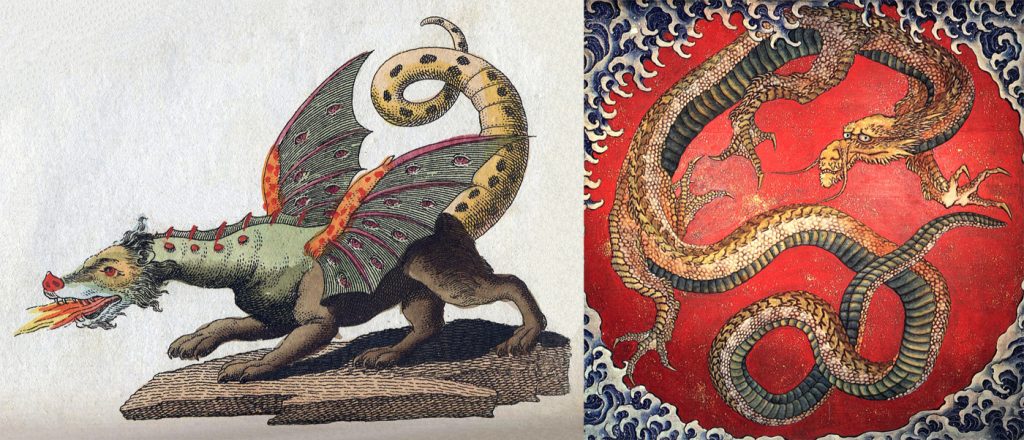Table of Contents
Introduction
Mythical creatures have captivated the human imagination for millennia, appearing in folklore, literature, and art across cultures worldwide. These beings, often embodying a mix of human, animal, and supernatural traits, reflect the fears, hopes, and beliefs of the societies that created them. As cultures evolved and interacted, so too did their mythical creatures, adapting to new environments, religious shifts, and cultural exchanges. The evolution of these creatures provides insight into how humans have understood the world around them and their place within it.

Ancient Beginnings: Serpents and Dragons
One of the most enduring mythical creatures is the serpent or dragon, which appears in the myths of nearly every ancient civilization. In Mesopotamia, the serpent was associated with chaos and destruction, as seen in the Babylonian myth of Tiamat, the primordial sea goddess defeated by the god Marduk. Similarly, in ancient Egypt, the serpent Apophis was an embodiment of chaos, threatening the sun god Ra each night.
In contrast, the dragon in Chinese mythology is a symbol of power, strength, and good fortune. Unlike its Western counterpart, the Chinese dragon is benevolent, associated with water, rain, and the emperor’s divine authority. This divergence in the symbolism of dragons between East and West reflects the different worldviews and environmental factors that shaped each culture. In Europe, where destructive storms and wildfires were common, dragons became fearsome beasts, while in China, where water and agriculture were central to life, dragons were revered as life-giving forces.
The Chimera: A Blend of Cultures
The chimera, a monstrous creature from Greek mythology with the body of a lion, the head of a goat, and the tail of a serpent, is an example of how mythical creatures can embody cultural hybridity. The chimera likely has its roots in the Near East, where similar composite creatures appeared in ancient art and mythology. As Greek culture interacted with the civilizations of the Near East, such as the Hittites and Egyptians, these motifs were absorbed and transformed into uniquely Greek forms.
The chimera’s evolution continued as Greek culture spread through Alexander the Great’s conquests, influencing myths in Persia, India, and beyond. Over time, the chimera became a symbol of impossible combinations and a cautionary tale against hubris, reflecting the Greek values of order and balance.

European Folklore: The Evolution of Fairies
In European folklore, fairies are one of the most complex and evolving mythical creatures. Originally, fairies were not the small, winged beings popularized by Victorian literature and art. In early Celtic and Germanic traditions, fairies were powerful, often malevolent spirits associated with nature, fate, and the Otherworld. They were both feared and respected, with elaborate rituals and taboos surrounding interactions with them.
As Christianity spread across Europe, the perception of fairies shifted. They were increasingly portrayed as diminutive, whimsical beings, reflecting the church’s attempt to diminish the influence of pagan beliefs. By the time of the Renaissance, fairies had become characters in literature and art, their once-dangerous nature softened to fit the tastes of the time. This transformation continued into the 19th century, where Victorian authors like J.M. Barrie and the Brothers Grimm reimagined fairies as innocent and playful, a trend that has persisted into modern popular culture.
The Globalization of Mythical Creatures
With the advent of global exploration and colonization, mythical creatures began to cross cultural boundaries more than ever before. The mermaid, for instance, appears in the folklore of many cultures, from the European sirens who lured sailors to their doom, to the African Mami Wata, a water spirit who could bring both wealth and destruction.
As European sailors and explorers encountered new lands, they brought back tales of strange creatures that often blended with local myths. The result was the globalization of mythical creatures, where elements from different cultures combined to create new hybrids. The griffin, a creature with the body of a lion and the head and wings of an eagle, is another example of this blending, with its origins tracing back to the Scythians of Central Asia and spreading to Greece and beyond.
Modern Interpretations and Revivals
In the modern era, mythical creatures continue to evolve, influenced by literature, film, and the internet. Creatures like vampires and werewolves, which have roots in European folklore, have been reimagined countless times in novels, movies, and TV shows. The 21st century has also seen a revival of interest in mythical creatures from non-Western cultures, such as the Japanese yōkai or the African tokoloshe, as global audiences seek out new and diverse narratives.
The internet has further accelerated the evolution of mythical creatures, with online communities creating and sharing new myths and interpretations. The popularity of cryptids, like Bigfoot or the Loch Ness Monster, shows how modern mythical creatures can capture the imagination much like their ancient counterparts.

Conclusion
The evolution of mythical creatures across cultures is a testament to the power of storytelling and the human imagination. As societies change, so too do the myths and creatures they create, reflecting their deepest fears, desires, and values. Whether they are dragons, fairies, or mermaids, these creatures continue to evolve, captivating new generations and bridging the gap between the ancient and the modern world.
